- Stat Significant
- Posts
- Gender Representation in the Film Industry: A Statistical Analysis
Gender Representation in the Film Industry: A Statistical Analysis
Tracking the evolution of gender representation in acting, directing, and producing.
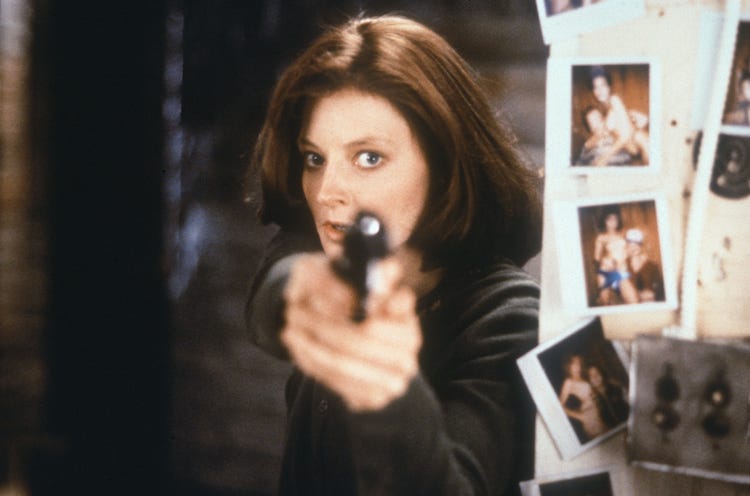
Silence of the Lambs (1991). Credit: Orion Pictures.
Intro: Quantifying Absence
Recently, I attempted to quantify "the greatest actors in movie history," blending online ratings, box office success, and Oscar recognition to create an (unquestionably authoritative!!) stack ranking of cinematic greatness. As is typical of any online rankings, the Internet had plenty of feedback on the final results, including (but not limited to):
Where's Daniel Day-Lewis?!
Art is subjective and thus cannot (and should not) be quantified!
Why isn't Meryl Streep at the top of this list?!
I don't like Leonardo DiCaprio, how is he number one?!
However, one comment in particular caught my attention, sparking an entirely new line of inquiry:

The "greatest actor" analysis briefly highlighted the significant underrepresentation of women in its final results (in a section not-so-subtly titled "This List is Almost Entirely Men"). However, digging deeper to further quantify this disparity and explore the industry dynamics underlying this trend now seemed like an obvious next step.
So today, we'll explore gender diversity in mainstream movies over time. We'll quantify how gender representation has changed across various filmmaking roles—including acting, directing, and producing—and highlight the stories typically designated to female performers and creators. Finally, we'll contemplate what the film industry and audiences lose when the diversity of filmmaker perspectives is limited.
Gender Representation Among Leading Actors
In 2014, North Korean hackers infiltrated Sony Pictures' servers, leading to a massive leak of the studio's internal communications. Amongst the cavalcade of corporate embarrassments and company secrets was the revelation that Jennifer Lawrence was paid significantly less than her co-stars in American Hustle despite equal star status. Both Lawrence and Amy Adams received a 7% share of the film's profits, while their male counterparts were given a 9% cut. At this point in time, gender inequality in the entertainment industry was an open secret, but seeing the behind-the-scenes deal-making that drove these pay disparities was truly eye-opening.
When it comes to on-screen gender representation, mainstream movies have both:
Come a long way.
Have a ways to go.
Until the early 1990s, women comprised roughly 20% of starring roles (meaning they were first on the call sheet). However, starting in the mid-nineties, we see a gradual rise in projects featuring female leads. By 2020, women were cast in 40% of leading roles, though this figure has declined in the aftermath of the pandemic.
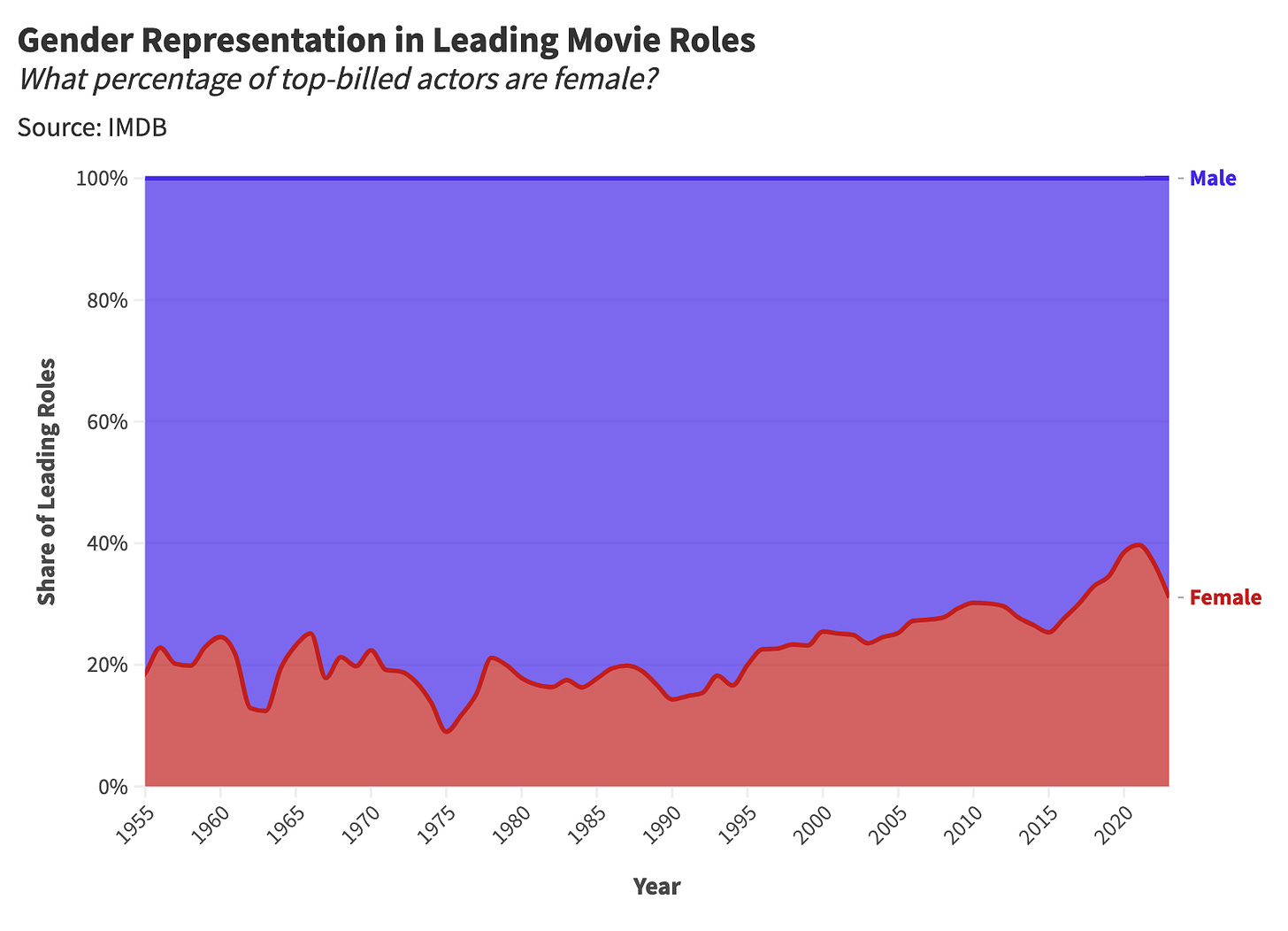
So what happened? Why did the prevalence of female protagonists rise and then suddenly dip? The answer, in part, can be found in the shifting popularity of movie genres.
Hollywood often links specific story concepts with audience demographics:
Animation is for younger viewers.
Action movies are often aimed at male audiences.
Rom-coms have traditionally targeted female moviegoers.
And how do you further capture the interest of your target demographic? Cast an actor your ideal audience can relate to!
This line of thinking leads to demonstrable gender inequity across genres, with women headlining 50% of "romance" films and a lowly 11% of action movies.
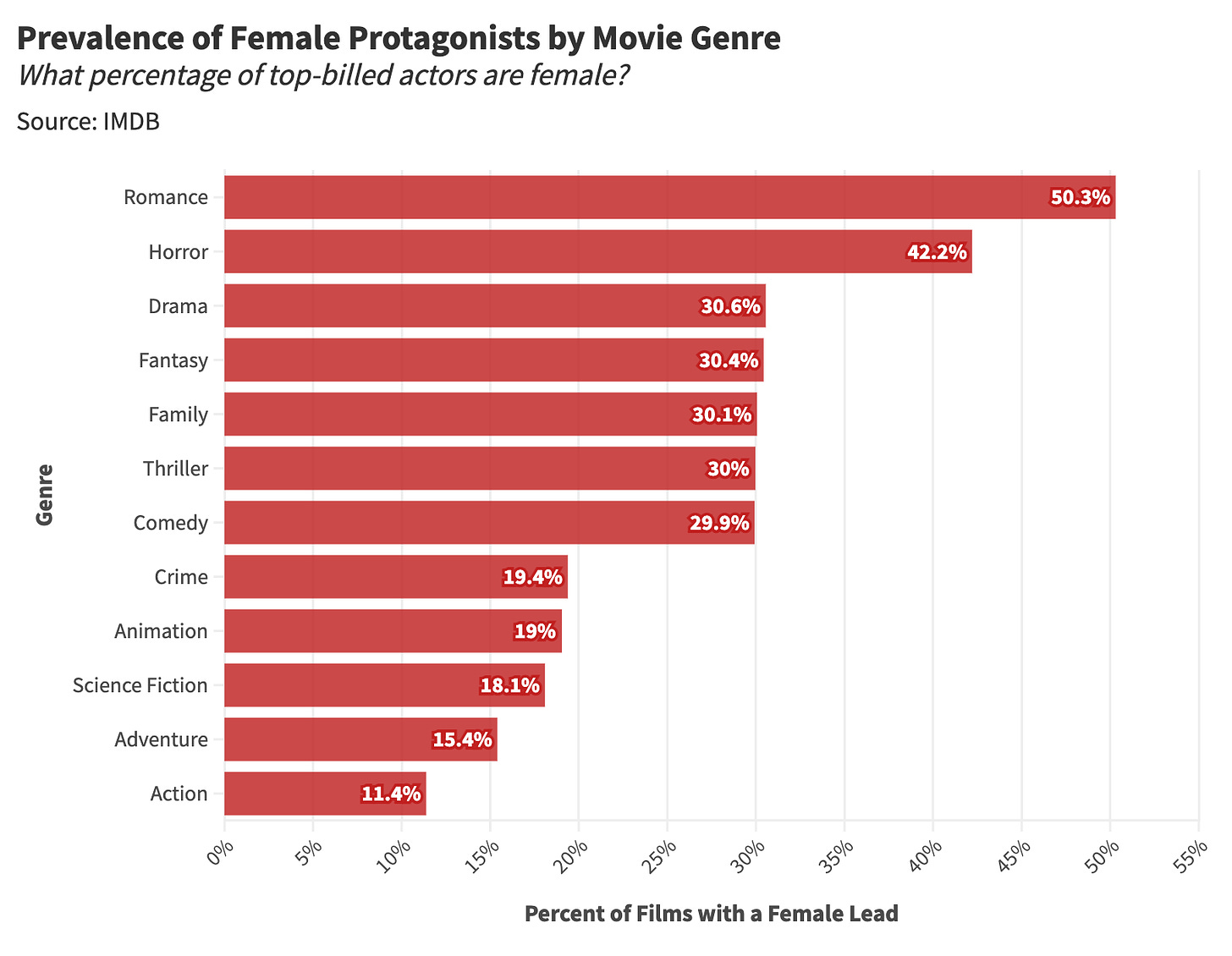
Beginning in the mid-90s, there was a rise in low- to mid-budget dramas and romantic comedies with female leads, including You've Got Mail, Sense and Sensibility, My Best Friend's Wedding, Sliding Doors, Runaway Bride, and Fried Green Tomatoes. This trend accelerated around 2016-2017, likely driven by Hollywood's reckoning with the Harvey Weinstein scandal and the entertainment industry's renewed focus on gender diversity.
So, what happened after 2020 to cause a decline in female leads? Well, the pandemic accelerated streaming adoption, weakening the commercial viability of films devoid of visual spectacle or a link to pre-existing intellectual property. Smaller dramas and rom-coms now exist as straight-to-streaming movies (The Idea of You and A Family Affair), eight-part miniseries, or (more likely) never make it out of development. Movies like Sleepless and Seattle, Runaway Bride, and Erin Brockovich would (most likely) not get made today.
I didn't analyze gender representation in television as part of this analysis, though perhaps that is the logical next step after this piece. That said, if you consider the decline in female movie protagonists in isolation—and you value films that showcase a diverse range of stories, characters, and performers—then this trend is worrisome.
Need Data Help? Stat Significant Has You Covered!
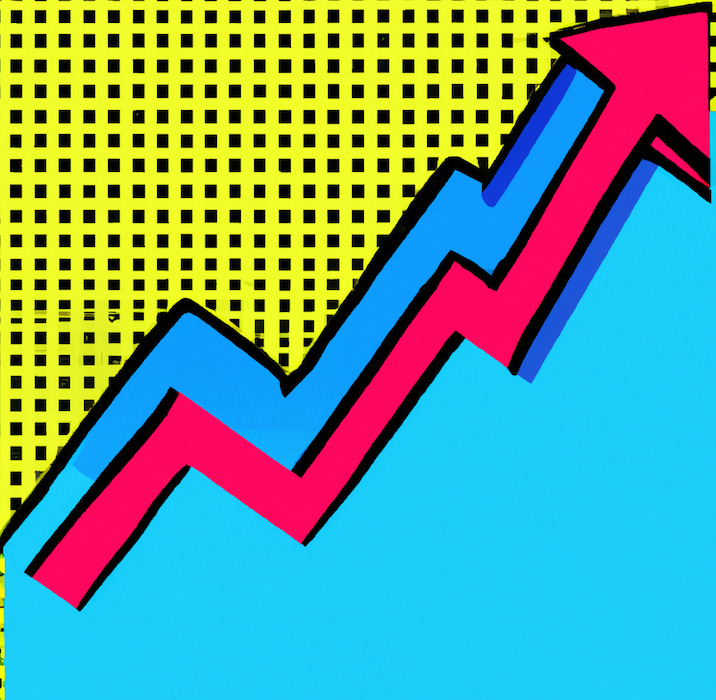
Enjoying the article thus far and want to chat about data and statistics? Need help with a data or research project? Well, you’re in luck because Stat Significant offers data science consulting services!
If you're looking to turn your data into strategic growth, drop me an email at [email protected], connect with me on LinkedIn, or book a free data consultation at the link below.
Gender Representation Among Entertainment Decision-makers
Lois Weber was a trailblazing filmmaker in early Hollywood, known for being one of the first female directors, producers, and studio owners. She made over 200 silent films, often addressing social issues such as poverty, birth control, and women's rights. Weber has been credited with pioneering the use of split screen and making the first sound film in the United States, yet she has largely been forgotten.
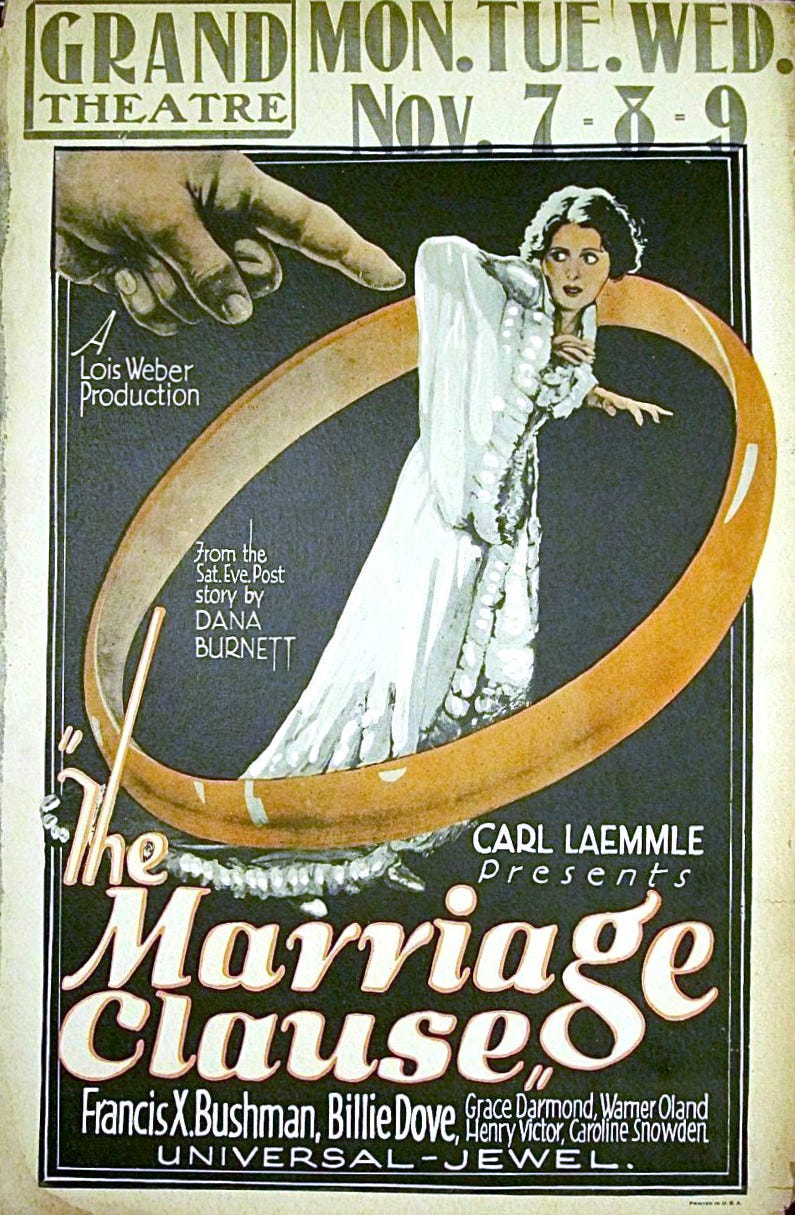
Lois Weber’s The Marriage Clause (1926). Credit: Universal Pictures.
Weber's legacy as an overlooked historical outlier is all too familiar. Only eight women have been nominated for Best Director in the Oscars' 95 years of existence. This past year, Greta Gerwig was snubbed for Best Director despite turning stale intellectual property about a plastic doll (Barbie) into an energetic joyride.
Gerwig's accomplishment is all the more impressive when you consider how few projects are helmed by female filmmakers—a figure that has grown very little over the past 70 years.

Unfortunately, the genre breakdown of female filmmakers features minimal variance, with reduced representation across all story formats.
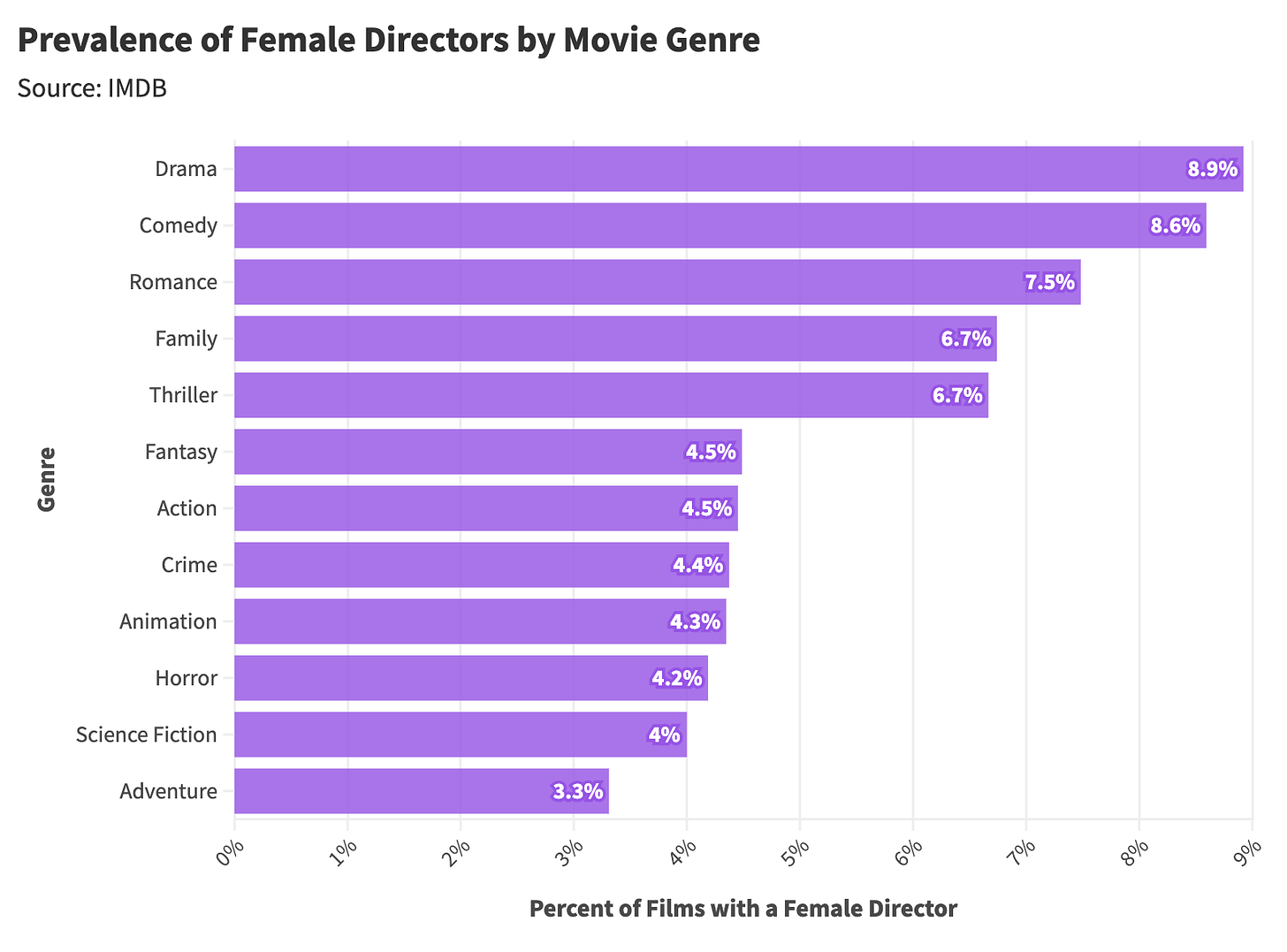
So, what perpetuates gender inequity among filmmakers? My first guess was Hollywood producers—an unfortunate subgroup haunted by misogynistic monsters like Harvey Weinstein and Brett Ratner.
While the prevalence of female producers remains quite low (around 20%), female representation within this group nearly doubles that of female directors.
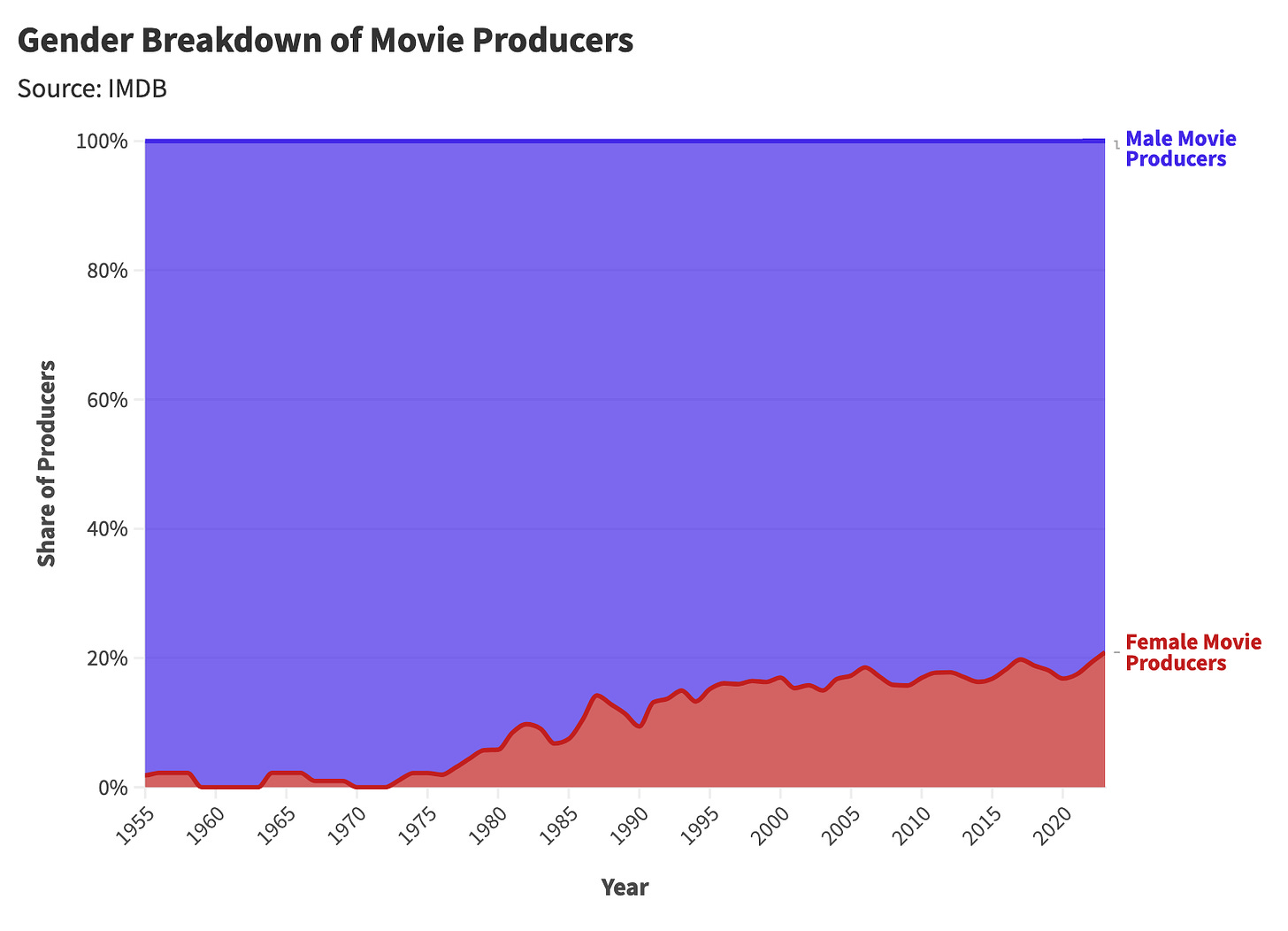
How is this possible?
Perhaps female directors are most acutely impacted by Hollywood's structural gender biases like a boys-club mentality, career punishment for maternity, explicit gender discrimination, scarcity of director positions, and so much more. Audiences are keenly aware of how many actresses are cast in mainstream films, but there is far less recognition of gender diversity behind the scenes.
You might think the rise in female producers would lead to greater gender diversity among directors, but that hasn't been the case—making Lois Weber's and Greta Gerwig's accomplishments all the more remarkable.
Final Thoughts: The Female Gaze
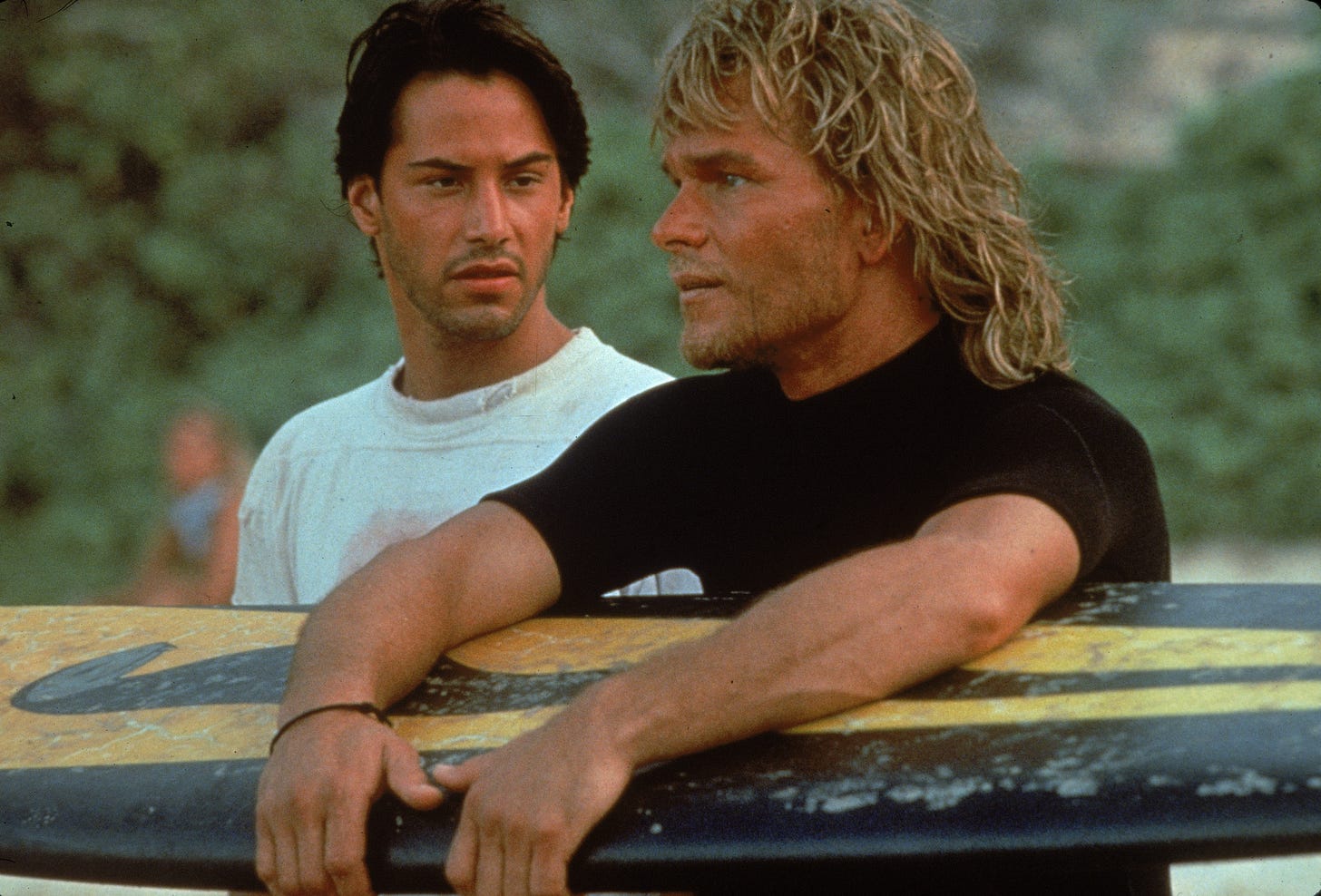
Point Break (1991). Credit: 20th Century Studios.
Point Break is a modern cult classic renowned for its kinetic intensity, campy line readings, Keanu Reeves-ness, and subtle deconstruction of action filmmaking. The movie tells the story of FBI agent Johnny Utah (Keanu Reeves), who goes undercover to stop a gang of bank-robbing surfers. Sounds silly, right? Well, that's because it is silly.
Central to Point Break's enduring legacy are observations of the film's homoerotic undertones, emphasizing the movie's focus on the male physique and the intense bond between male characters. Consider this sampling of top Letterboxd reviews:
"fellas is it gay to look your brah in the eyes and say 'i know you want me so bad it's like acid in your mouth'"
"this movie could cure heterosexuality."
"gay"
Now, consider that this film was directed by Kathryn Bigelow, the Oscar-winning filmmaker behind The Hurt Locker, and (checks notes) a woman. How does this influence our interpretation of the film? Is this movie truly homoerotic, or are we witnessing an action film crafted from a uniquely uncommon perspective—or both? If this movie were made with a male director, would the resulting product still provoke claims of homoeroticism, or would this change in viewpoint undermine Point Break's uniqueness?
Many of the characters in this film—heroes and villains alike—are hypocrites and bumbling fools, an oddity for the self-serious action genre. Would a run-of-the-mill action director strip away these characters' imperfections and vulnerabilities to produce a sleeker product laden with stoic, hyper-macho, one-dimensional figures?
Well, fun fact: Point Break was remade in 2015, helmed by some dude named Ericson Core, and this much-derided adaptation holds an approval rating of 11% on Rotten Tomatoes. Critics widely faulted the remake for lacking Bigelow's self-reflexive charm and deconstruction of hyper-masculinity, with the A.V Club quipping, "The new Point Break drops the original's Zen-like balance of macho mysticism and camp in favor of dour humorlessness."
Is it misguided to cite filmmaker gender as a key driver of differences between Point Break and its remake? If gender plays a role, to what degree can we attribute thematic and storytelling variations to this characteristic? One thing is for certain: the original Point Break possesses an elusive quality that has proven difficult to replicate—whether by other action movies or direct adaptations.
In 2010, Kathryn Bigelow won Best Director for her work on The Hurt Locker, defeating James Cameron (nominated for Avatar), who also happens to be—wait for it—her ex-husband. Bigelow became the first woman to win the award, and her victory was hailed as a changing of the guard—a giant step forward for female filmmakers—especially given the scintillating plotline with her ex.
And yet, statistically speaking, the prevalence of female directors has changed very little since Bigelow's Oscar breakthrough. This fact seems to defy the prototypical Hollywood ending—until you remember that it is, indeed, Hollywood who has perpetuated this inequality.
Thanks for reading Stat Significant! Subscribe for free to receive new posts and support my work.
Want to chat about data and statistics? Have an interesting data project? Just want to say hi? Email [email protected]